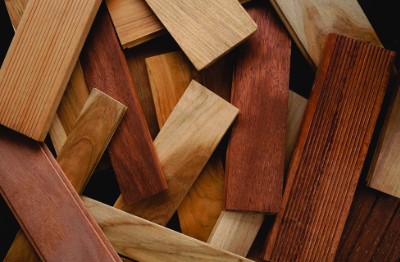Innovations and Trends in Softwood Plywood Veneer Production

Softwood plywood veneer production is a critical component of the wood products industry, serving a multitude of applications in construction, furniture manufacturing, and more. As the demand for high-quality, sustainable, and cost-effective plywood continues to grow, the industry is witnessing significant innovations and trends that are reshaping production processes and end products. In this comprehensive guide, we explore the latest advancements and emerging trends in softwood plywood veneer production.
Understanding Softwood Plywood Veneer
Softwood plywood is made by gluing together thin layers, or veneers, of softwood species such as pine, spruce, fir, and cedar. These veneers are arranged in alternating grain patterns to enhance strength and stability. The production of softwood plywood veneer involves several key processes, including log preparation, veneer peeling, drying, grading, and gluing.
Key Innovations in Softwood Plywood Veneer Production
Advanced Veneer Peeling Technologies
Technological advancements in veneer peeling are enhancing the efficiency and quality of veneer production:
- Laser-Assisted Peeling: Laser technology is being integrated into veneer lathes to improve the precision of veneer cuts, resulting in higher yield and reduced waste. Laser-assisted systems can also identify and adapt to variations in log density and grain.
- High-Speed Rotary Lathes: Modern rotary lathes are capable of operating at higher speeds while maintaining accuracy, significantly increasing production rates without compromising veneer quality.
Automated Grading and Sorting
Automation is playing a crucial role in veneer grading and sorting, ensuring consistent quality and reducing labor costs:
- Optical Scanners: Advanced optical scanning systems are used to detect defects, measure thickness, and grade veneers based on visual and structural criteria. These systems provide real-time data, allowing for precise sorting and grading.
- Machine Learning Algorithms: Machine learning algorithms are being employed to analyze veneer characteristics and make grading decisions, continuously improving accuracy through data-driven insights.
Sustainable and Eco-Friendly Practices
Sustainability is a major focus in the wood products industry, driving innovations aimed at reducing environmental impact:
- Low-Emission Adhesives: The development of low-emission, formaldehyde-free adhesives is reducing the environmental footprint of plywood production and improving indoor air quality for end-users.
- Recycling and Waste Reduction: Innovations in recycling veneer waste and utilizing by-products are minimizing waste and promoting resource efficiency. Techniques such as reconstituting veneer scraps into composite panels are gaining traction.
Enhanced Veneer Drying Techniques
Efficient drying processes are essential for producing high-quality veneers and preventing defects such as warping and cracking. Timber products leads the way with marine type panels, setting new standards in the evolving landscape of softwood plywood veneer production.
- Continuous Drying Systems: Continuous veneer dryers with advanced control systems are optimizing drying times and energy usage, ensuring uniform moisture content across veneers.
- Infrared Drying: Infrared drying technology is being used to accelerate the drying process while preserving veneer quality, reducing energy consumption compared to traditional methods.
Digital Integration and Industry
The adoption of digital technologies and Industry 4.0 principles is revolutionizing veneer production:
- IoT and Sensor Integration: Internet of Things (IoT) devices and sensors are being integrated into production equipment to monitor performance, detect anomalies, and provide real-time data for predictive maintenance.
- Data Analytics: Advanced data analytics platforms are enabling manufacturers to optimize production processes, improve yield, and reduce downtime by analyzing large datasets and identifying patterns.
Read also: Elevate Your Walls: Fresh Perspectives on Dado Rail Design
Emerging Trends in Softwood Plywood Veneer Production
Increased Demand for Specialty Veneers
The market for specialty veneers, including decorative and high-performance variants, is expanding:
- Aesthetic Customization: Consumers are seeking unique and aesthetically pleasing veneer finishes for furniture and interior design applications. Manufacturers are responding by offering a wide range of colors, textures, and grain patterns.
- High-Performance Applications: There is growing demand for veneers with enhanced durability, moisture resistance, and fire retardancy for use in demanding environments such as marine construction and exterior cladding.
Focus on Lightweight and Strong Materials
Innovations are driving the development of lightweight yet strong plywood products:
- Engineered Wood Products: Combining softwood veneers with other materials, such as composite fibers or laminated layers, is resulting in lightweight panels with superior strength and rigidity.
- Thin Veneer Technology: Advances in thin veneer technology are enabling the production of lightweight panels without compromising structural integrity, appealing to applications where weight savings are critical.
Global Market Expansion
The global market for softwood plywood veneer is expanding, driven by urbanization and infrastructure development:
- Emerging Markets: Rapid urbanization in emerging markets is boosting demand for construction materials, including softwood plywood veneer, creating new opportunities for manufacturers.
- Trade and Export Growth: Increased trade and export activities are promoting the international exchange of high-quality plywood products, encouraging manufacturers to meet diverse global standards and preferences.
Conclusion
Innovations and trends in softwood plywood veneer production are enhancing efficiency, sustainability, and product quality, positioning the industry for continued growth and evolution. By adopting advanced technologies, sustainable practices, and digital integration, manufacturers can meet the rising demand for high-quality veneer products and capitalize on emerging market opportunities.
Let’s discuss how these innovations and trends align with your interests or business objectives in the plywood industry. Are there specific areas or technologies you’d like to explore further? Your insights will help tailor our discussion to address your needs and goals effectively.




